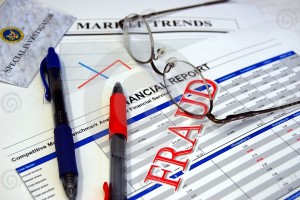Last week’s blog inspired a lot of conversation regarding the economic impact of the coronavirus virus. I have received numerous phone calls and emails from attorneys and business owners inquiring about our damage calculation services. Yesterday, my wife and I took a short walk near our New York City apartment. As we witnessed many store owners covering their windows with plywood in anticipation of their planned “temporary closure,” I wondered how many of these businesses would be able to weather the storm of this pandemic. Our firm just reached our 30th anniversary. During this time, we have worked with businesses of various sizes and sophistication. One of the differences between the two, other than size, is that these businesses often differ by their access to capital. Small and medium-sized companies have always been considered riskier by lenders and investors. Many of those small business owners whose shops line Main Street, USA are covering their windows with plywood panes, and many may never open again. Only time will tell as to which ones survive. With that being said, your business clients may now be considering filing a damage report. This analysis may look to calculate either lost profits or lost business. In either case, the objective is to restore the plaintiff to the position it would have been – “but-for” the event that caused the damages. Lost Profits When calculating lost profits, damages are typically measured for a specific or limited period of time. In general, the loss is the […]
Blog
Category: Uncategorized
We have distilled decades of experience at the intersection of law, business and finance into a suite of articles to help our clients make sense of business valuation, forensic accounting, and litigation support. Please visit our site regularly for our latest content.
Lost Profits v. Loss of Business during the Coronavirus Pandemic
Posted in Uncategorized, on Mar 2020, By: Mark S. Gottlieb
ShareDealing with Fraud: A Simple Four Step System
Posted in Financial Advisory, on Apr 2016, By: Mark S. Gottlieb
Share
Modern day examples of fraud don’t always take the form of mustachioed Ponzi-types with elaborate systems of deception. Today, elusive acts of fraud in the workplace are running rampant, especially throughout small businesses. The ability to commit and get away with fraud has become even more accessible with the increased use of social technologies in the workplace. Tech savvy fraudsters can use anything from Facebook messaging to Snapchat to communicate plans for manipulating company funds in a way that is difficult to detect. If you or your client is suspicious of fraudulent activity in the workplace, it is essential to take the steps necessary to resolve the issue as quickly as possible. The following four steps should be taken to stop any potential fraudulent behaviors: Detection of Potential Fraudulent Activity in the Workplace The two main types of business fraud are (1) inappropriate personal use of business assets and (2) falsifying financial statements. These types of fraud can come in many forms, including but not limited to the following: Embezzlement, Forgery of official documents, Tampering with bank records, Inventory theft, Benefitting from placing a redundant order, Using company credit cards for personal expenses, Selling business assets under the market value, Manipulating the overtime periods, and Creating fictitious expenses and obtaining disbursements. If any of these behaviors are suspected, it is important to investigate. Forensic Investigation Although most employers wouldn’t like to think of their employees as the type to commit fraud, fraudulent behavior is surprisingly prevalent, especially among smaller […]

